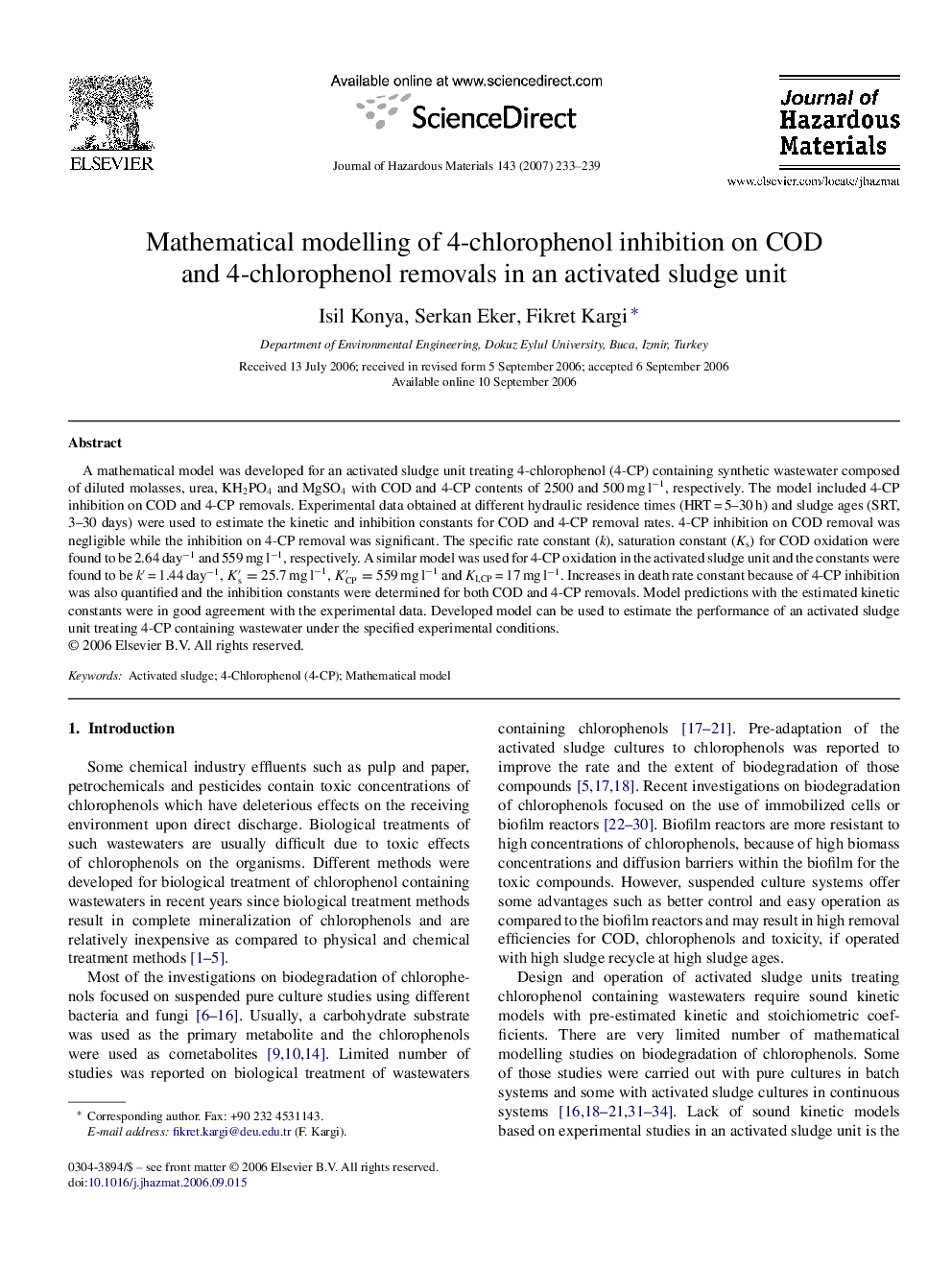| Article ID | Journal | Published Year | Pages | File Type |
|---|---|---|---|---|
| 584715 | Journal of Hazardous Materials | 2007 | 7 Pages |
Abstract
A mathematical model was developed for an activated sludge unit treating 4-chlorophenol (4-CP) containing synthetic wastewater composed of diluted molasses, urea, KH2PO4 and MgSO4 with COD and 4-CP contents of 2500 and 500 mg lâ1, respectively. The model included 4-CP inhibition on COD and 4-CP removals. Experimental data obtained at different hydraulic residence times (HRT = 5-30 h) and sludge ages (SRT, 3-30 days) were used to estimate the kinetic and inhibition constants for COD and 4-CP removal rates. 4-CP inhibition on COD removal was negligible while the inhibition on 4-CP removal was significant. The specific rate constant (k), saturation constant (Ks) for COD oxidation were found to be 2.64 dayâ1 and 559 mg lâ1, respectively. A similar model was used for 4-CP oxidation in the activated sludge unit and the constants were found to be kâ²Â = 1.44 dayâ1, Kâ²s=25.7mglâ1, Kâ²CP=559mglâ1 and KI,CP = 17 mg lâ1. Increases in death rate constant because of 4-CP inhibition was also quantified and the inhibition constants were determined for both COD and 4-CP removals. Model predictions with the estimated kinetic constants were in good agreement with the experimental data. Developed model can be used to estimate the performance of an activated sludge unit treating 4-CP containing wastewater under the specified experimental conditions.
Related Topics
Physical Sciences and Engineering
Chemical Engineering
Chemical Health and Safety
Authors
Isil Konya, Serkan Eker, Fikret Kargi,
